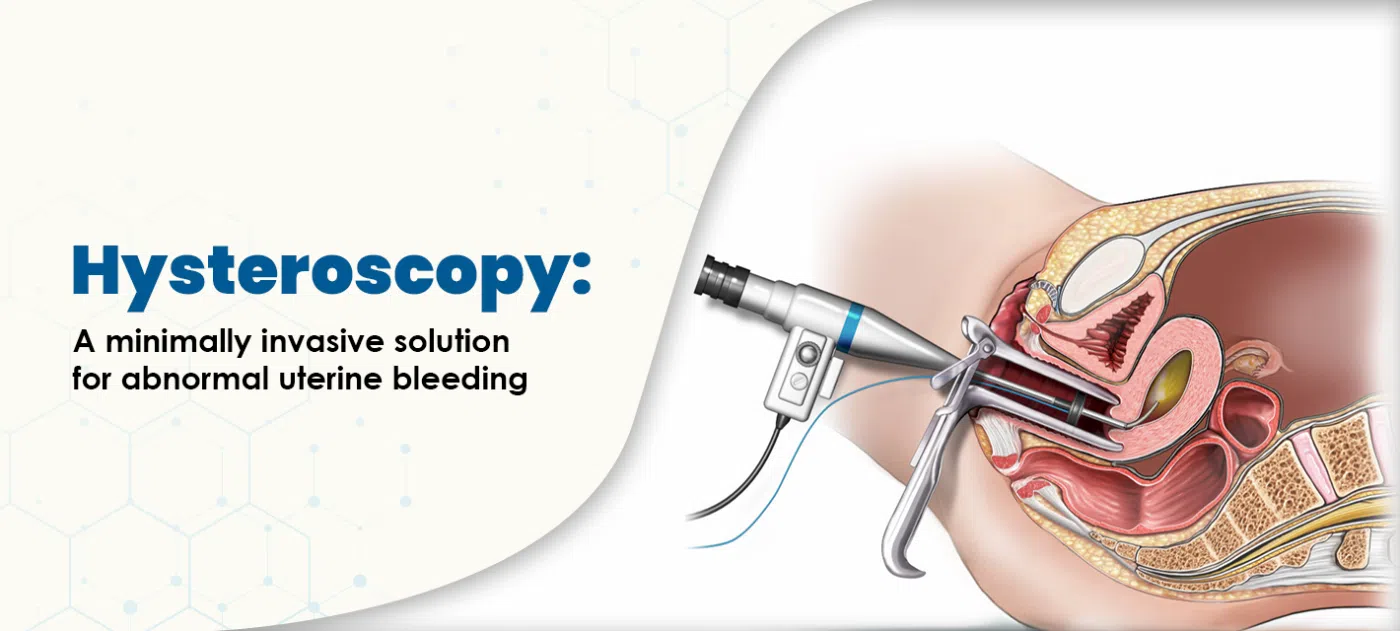Hysteroscopy: A minimally invasive solution for abnormal uterine bleeding
Abnormal uterine bleeding is a common concern among women of all ages, with causes ranging from hormonal imbalances to structural abnormalities within the uterus. If you are experiencing abnormal uterine bleeding, your doctor may recommend a hysteroscopy to help diagnose and treat the underlying condition. In this blog post, we will discuss how hysteroscopy can be used to diagnose and treat abnormal uterine bleeding.
What is Abnormal Uterine Bleeding?
Abnormal uterine bleeding refers to any bleeding that occurs outside of a woman’s normal menstrual cycle. This can include:
- Heavy or prolonged periods
- Irregular periods, or
- Bleeding between periods
Abnormal uterine bleeding can have many causes, including:
- Hormonal imbalances
- Uterine fibroids
- Endometriosis, and
- Uterine polyps
Diagnosing Abnormal Uterine Bleeding with Hysteroscopy
Hysteroscopy is a minimally invasive procedure that allows your doctor to examine the inside of your uterus and identify any abnormalities or conditions that may be causing your abnormal uterine bleeding. During the procedure, a hysteroscope – a thin, lighted tube with a camera attached to the end – is inserted through your cervix and into your uterus. The camera sends images to a monitor, allowing your doctor to examine your uterus and related structures in real-time.
If your doctor suspects that your abnormal uterine bleeding is caused by a structural abnormality within your uterus, such as a fibroid or polyp, they may use the hysteroscope to remove the abnormal tissue. This can be done through a procedure called hysteroscopic resection, which involves using a small surgical instrument inserted through the hysteroscope to remove the tissue.
Treating Abnormal Uterine Bleeding with Hysteroscopy
If your abnormal uterine bleeding is caused by a hormonal imbalance, your doctor may recommend hormonal treatment or a minimally invasive procedure called endometrial ablation. Endometrial ablation is a procedure that uses heat or other energy sources to destroy the lining of the uterus, reducing or stopping menstrual bleeding.
During a hysteroscopy procedure, a thin, lighted tube called a hysteroscope is inserted through the cervix and into the uterus, allowing the doctor to examine the uterine lining for abnormalities. If a problem is detected, the doctor can use the hysteroscope to perform minimally invasive treatments, such as removing polyps or fibroids, or performing endometrial ablation to remove the uterine lining.
If endometrial ablation is not appropriate for you, your doctor may recommend a hysteroscopic myomectomy, which involves removing uterine fibroids using a hysteroscope. This procedure can be effective in reducing heavy bleeding caused by fibroids.
Conclusion
Abnormal uterine bleeding can be a frustrating and uncomfortable experience for women, but hysteroscopy can be a useful tool in both diagnosing and treating the underlying causes. If you are experiencing abnormal uterine bleeding, speak to your doctor about whether a hysteroscopy may be a suitable diagnostic and treatment option for you.
Hysteroscopy is a safe and effective procedure with a low risk of complications, and it can help women with abnormal uterine bleeding find relief and improve their quality of life.

